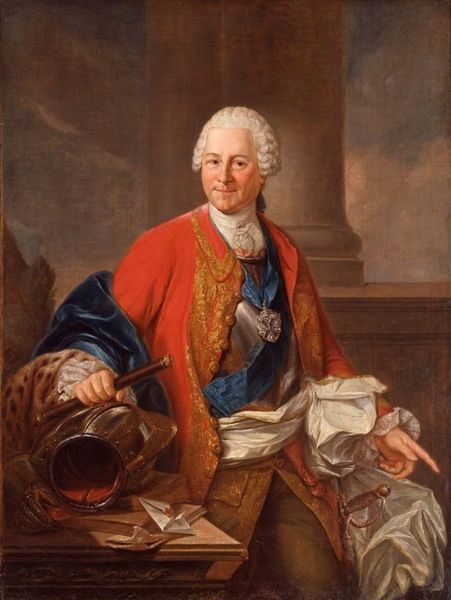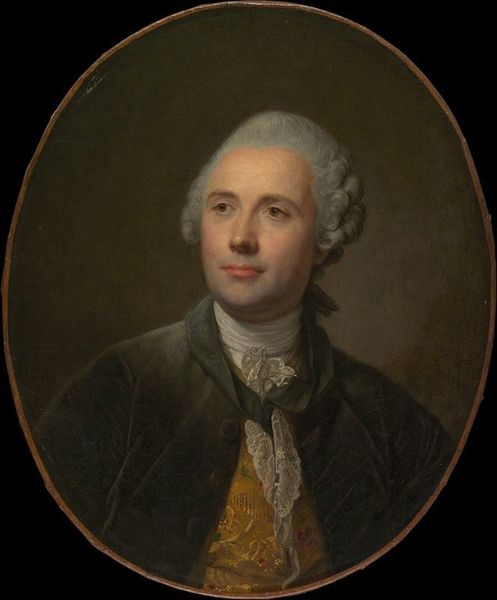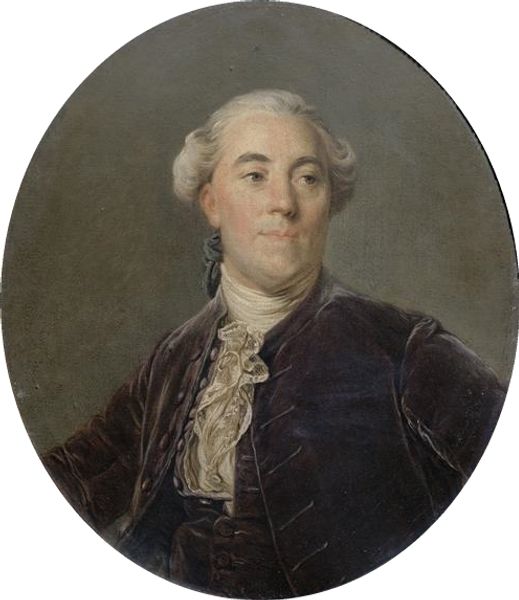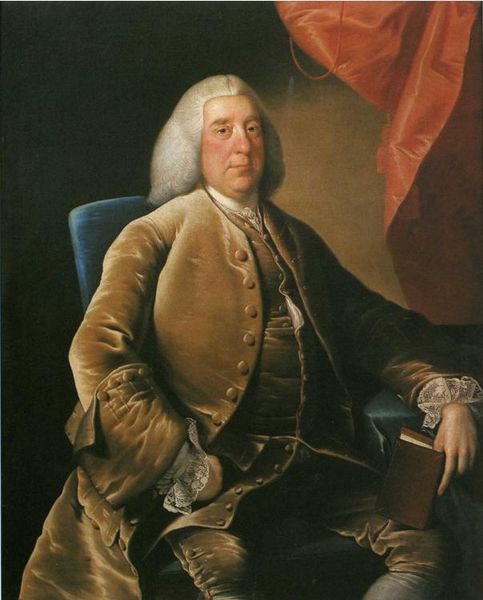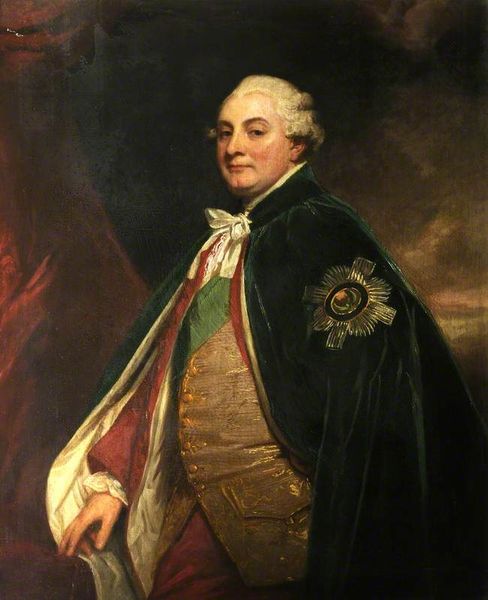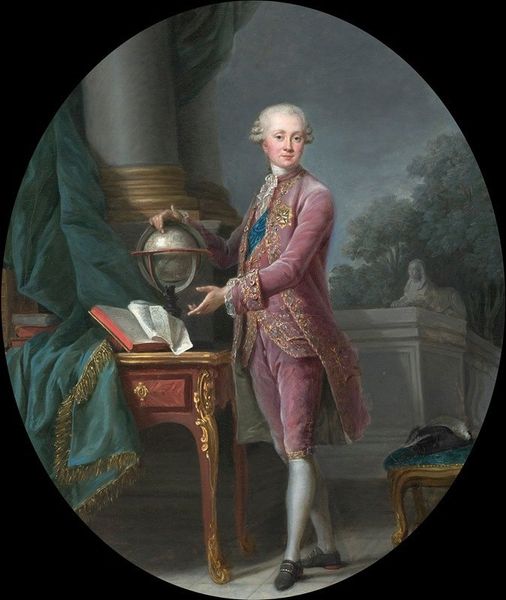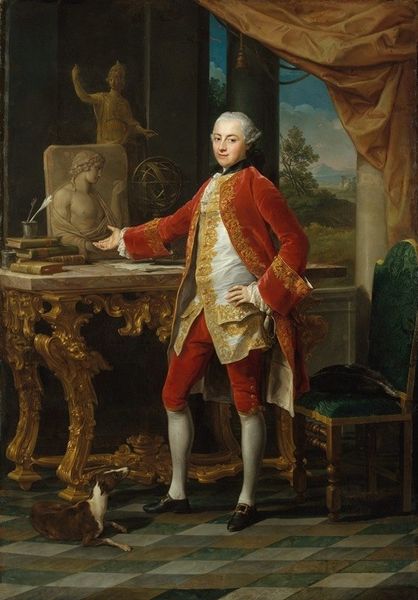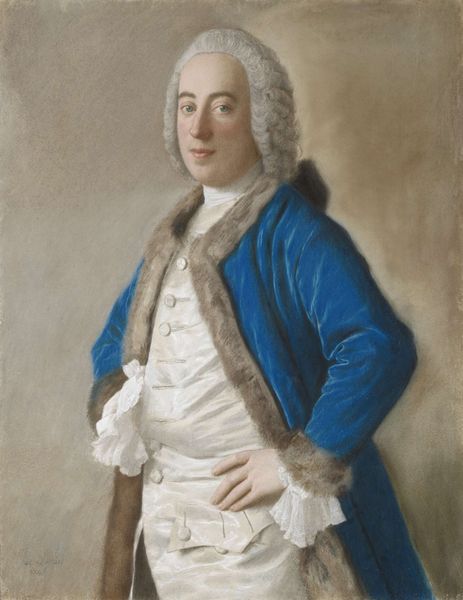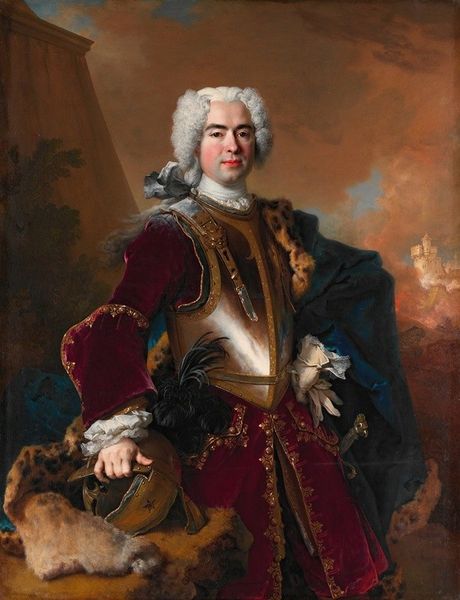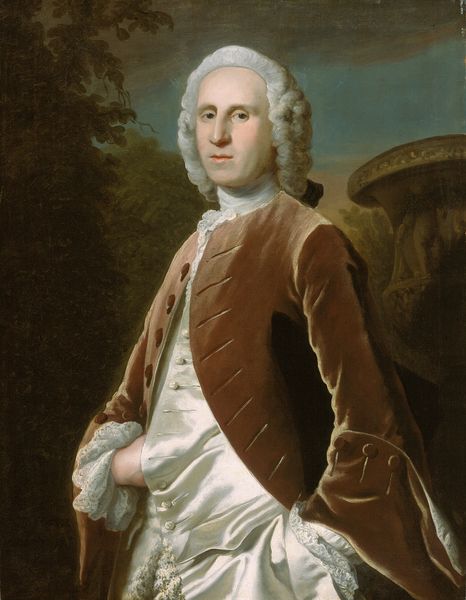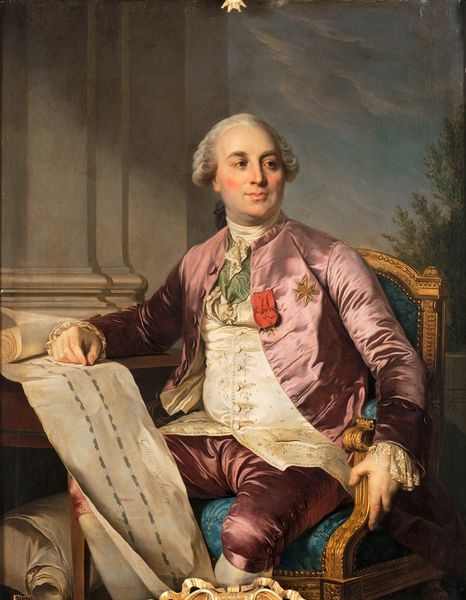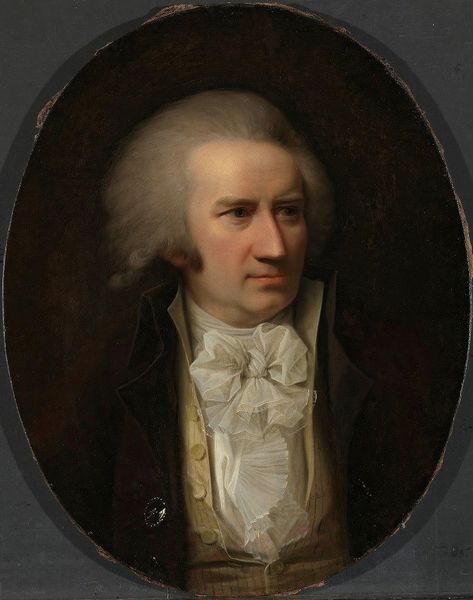
oil-paint
#
portrait
#
neoclacissism
#
oil-paint
#
history-painting
#
academic-art
#
portrait art
#
realism
Copyright: Public domain
Curator: Here we have a self-portrait of Joseph-Marie Vien, rendered in oil paint around 1784. It's currently housed here at the Louvre in Paris. Vien, a key figure in the Neoclassical movement, offers us an interesting insight into his persona through this canvas. Editor: My first impression is the rather restrained elegance, even in the choice of color. That subdued rose coat against the darker background suggests a cultivated, yet modest, presence. What strikes you about Vien's self-representation? Curator: The palette, of course. Vien literally holds the tools of his trade, asserting his identity as an artist. Notice the small brush in his left hand, poised, almost mid-stroke, capturing the symbolic weight of creation. This recalls the idealized artist, the demiurge, if you will. Editor: It’s an intentional choice. But I read something of the establishment in that image too. Neoclassicism, after all, often aligned with those in power. Does the composition not whisper of aristocracy and tradition, particularly in pre-revolutionary France? Curator: True, Vien's career benefited from royal patronage. But Neoclassicism also represents a return to reason, a reaction against the frivolity of the Rococo. In Vien’s meticulous brushwork and carefully chosen composition, one can find a desire for order, intellectual rigor. Editor: I see that yearning, yet the portrait also feels like a deliberate act of self-fashioning. He presents himself not merely as an artist but as a figure worthy of historical consideration. The muted palette, while "tasteful", also speaks to an assertion of control, perhaps to distance himself from earlier, perceived excesses. Curator: Perhaps. The green curtain in the background reminds of theatrical backdrops, indicating a fabricated and symbolic dimension to his work. It's a reminder that portraits have never been simple records but rather stage settings to perform selfhood and project personal legacy. Editor: Exactly! Portraits exist as political acts; even what seems a mere detail reveals social intent. And Vien’s portrait performs an assertion of bourgeois status in the artistic realm. Curator: It’s a nuanced depiction. It mirrors Vien's place at a crossroads. He draws inspiration from the classical world and creates space for an individual artist’s own vision within Neoclassical ideals. Editor: So it's more of a transition in ideology as reflected through visual choices in portraiture. What a reminder of the constant negotiation between art, history and selfhood.
Comments
No comments
Be the first to comment and join the conversation on the ultimate creative platform.
